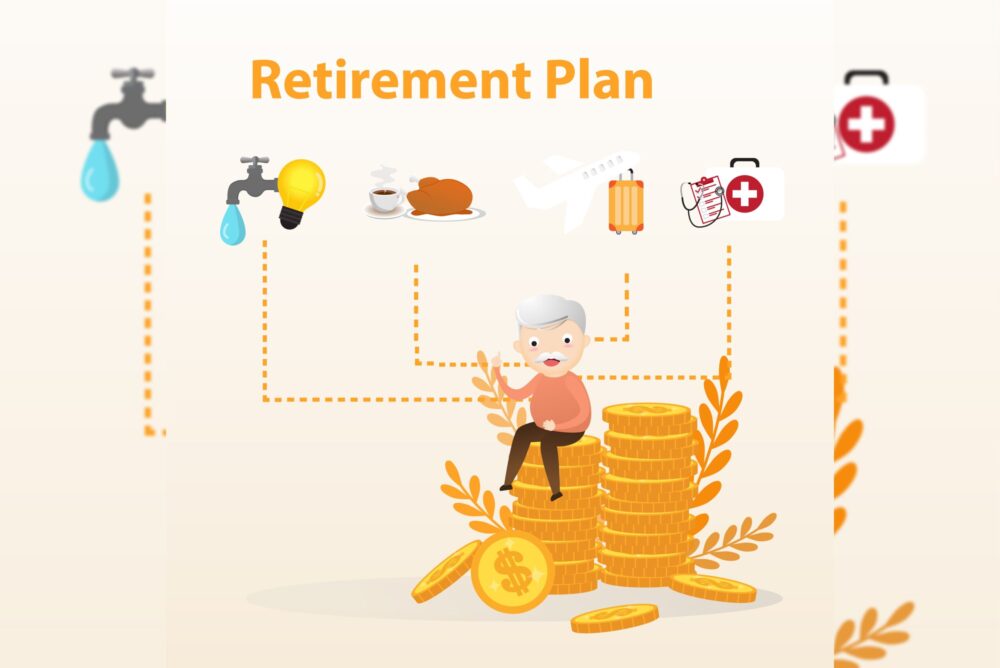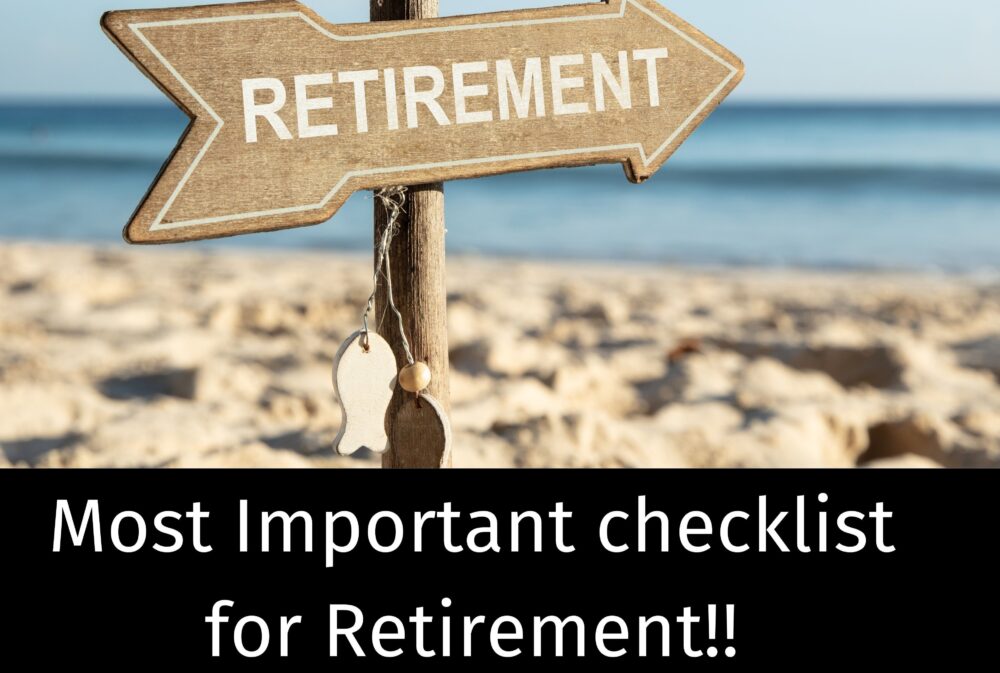Human life can be viewed as a journey, with experiences and financial milestones along the way. One way to categorise this journey is by dividing it into phases based on our consumption patterns. This perspective provides a unique lens for navigating our financial lives.
Financial Phases of Life Journey
Typically, we humans go through the following financial phases throughout our life’s journey:
Consumption-only phase – From birth until our first income-earning day, we are solely reliant on others for our consumption needs.
Earning & Consumption phase – This phase begins when we start earning an income and continues until retirement. During this time, we balance our earnings with our consumption, striving to create a surplus for the future.
Consumption-only phase – Post-retirement, we enter a phase where our consumption relies on the resources we’ve accumulated during our earning years.
By Retirement, we mean not having active earning income.
The first phase is mostly fully–dependent on parent’s funding, while the other two must be managed by us. While earning is important, so is the management of the income for expenses and surplus along with a few other factors, to lead a financially secure life.
Today, let us have a look at the 3rd phase i.e. the post-retirement – Consumption only phase.
In this phase, we have a certain amount of corpus accumulated from our earnings phase, which is supposed to firstly provide us with a regular income at least till our survival for our day-to-day needs & wants and secondly maybe further passed on to our next generation as a legacy.
In this blog, we are going to focus on the first part, i.e. regular Income Generation with sustenance till survival.
Post-Retirement Phase
In the post-retirement phase, the following are important areas to consider when choosing investment products, ranked by order of importance, with number 1 being the most crucial:
- Liquidity of the Product
How easily can you access the funds in the investment product when needed? Accessibility could range from within a few hours to a couple of days. - Risk in the Product
This helps us understand the possibility of losing our capital. It’s crucial to consider this aspect, as some investments might be dismissed if their liquidity does not meet our needs. - Investment Returns of the Product
This aspect is vital to ensure that our portfolio sustains us and prevents our corpus from depleting prematurely. The portfolio will comprise a mix of various products. - Tax Efficiency of the Product
This aspect informs us how much money we will have after tax deductions, which is essential for covering regular expenses. - Maintenance Cost
This tells us about the costs associated with retaining the product in our portfolio, which can sometimes deter investment. - Initial Capital Required
This explains the amount of capital needed to start investing in the product.
Product Options
With the above factors in mind let us check the various retirement income options available in the market and how they can be used for your portfolio construction.
A.) Fixed Income with No to Low Growth & Low to Nil Appreciation in Capital:
Fixed Income products like Fixed Deposits, Senior Citizen Savings Scheme, Post Office Monthly Income Scheme, Immediate Annuity Plans from insurance companies, Pradhan Mantri Vay Vandan Yojana, Bonds & Debentures, etc. provide fixed income either monthly, quarterly, or annually but the investment amount does not appreciate. “They can be used to meet regular needs without deviating from the expected income. However, the income might not increase alongside expenses due to inflation over time. This could lead to the need to use the principal to cover expenses, potentially depleting it before it is sufficient to last throughout your lifetime.
B.) Fixed Income with Growth & Appreciation in Capital:
Residential and commercial properties belong to this category. They can provide a steady monthly rental income with potential annual growth, as well as capital appreciation of the invested value. However, a significant initial capital investment is required to start investing in these properties.
C.) No Fixed Income & High Capital Appreciation:
Income from dividends can be either nonexistent or irregular throughout the year when investing in equity markets, such as stocks or equity mutual funds (MFs). These investments can be highly volatile, with a potential risk of capital loss shortly after investing. However, if retained over a longer timeframe, they can yield significant growth. Historical studies have shown that equity and equity-based instruments have consistently generated growth that surpasses inflation, thereby providing positive real returns. This allows the capital to not only be preserved but also to achieve real growth over time. Moreover, investing in these instruments can be initiated with a relatively small amount of capital.
We can a quick look at the above 3 products w.r.t. the 6 parameters defined above:
| Conditions \ Parameters | Flat fixed-income products with No Capital Appreciation | Growing Fixed Income Products with Less Capital Appreciation | Nil / Irregular Fixed Income Products with High Capital Appreciation |
| Instruments | Fixed Income products like Fixed Deposits, Senior Citizen Savings Scheme, Post Office Monthly Income Scheme, Immediate Annuity Plans from insurance companies, Pradhan Mantri Vay Vandan Yojana, Bonds & Debentures, etc. | Residential & Commercial properties | Equity market products like Stocks, Equity MFs |
| Liquidity | Highly liquid, with possible penalties. Cannot be sold partially |
Illiquid, can take a long time to sell the property. cannot be sold partially |
Highly liquid, some funds may have exit loads Can be sold partially |
| Risk | Lower Risk of Capital Loss; High Reinvestment Risk i.e. lower rate of returns on investment of maturity proceeds | Low-risk products in terms of capital loss over the long term but can be an issue if no tenant is found to provide the regular monthly income in the form of rent | Due to their highly volatile nature, they carry high risk in terms of capital loss as well and can’t provide a fixed income for regular sustenance |
| Investment Returns | Lower Returns that can be lower than the inflation rate & hence, a negative real rate of returns which cause erosion in the capital over the period | Low returns product in terms of rental yield especially the residential properties. The property prices can stay flat without no or low growth in value of the property for long periods thus lowering long-term returns on the product |
Can provide high investment returns leading to capital appreciation over the long term but can generate negative returns in the short term of investment |
| Tax Efficiency | Tax inefficient as the income generated from them will be taxed as per the tax slabs of the respective investors | Less tax efficient on the rental income earned, taxed as per the respective slab rate. The profit, if any made from the sale of the property is also taxed as capital gains |
Much more Tax efficient than the above 2 instruments be it in the short term or long term with fixed tax rates on the capital appreciation but the dividend earned above a certain level will be taxed at the respective tax slabs |
| Maintenance Cost | Low or Nil maintenance cost financial products | Due to their physical nature, these are high-maintenance cost products to keep up the value and the inhabitable ambience. | Low to nil maintenance products while investing or retaining them. |
| Initial Capital required | can be started with low investment amount | Needs high capital to start investing | can be started with low investment amount |
As can be seen, relying on any one of these options individually may not meet our needs for regular, tax-efficient income, liquidity, and long-term sustenance. Instead, we can combine two or three of these options in a way that suits our specific requirements. This approach is known as utilising an Asset Allocation Strategy
The 3 Buckets Strategy
A simpler approach is to use the ‘Three Buckets’ strategy outlined below. This strategy involves using financial products such as mutual funds (MFs), fixed deposits (FDs), and some short-term bonds i.e. only two of the above 3 product options which are type A & type C
Bucket 1: Regular Income Provision – This involves calculating the net shortage of income needed for regular monthly expenses by subtracting any receivable pension or rental income from the total monthly expenses. The amount required to cover this shortage for three years should be kept in liquid forms, such as Liquid Debt Mutual Funds, Fixed Deposits, etc., from which monthly income can be derived.
Bucket 2: Emergency Corpus & additional Debt Provision – Based on the pre-decided asset allocation, the balance debt portion adjusted for the income provision is invested in Low to Short duration Debt MFs, FDs or Bonds.
Bucket 3: Long-Term Growth – Based on the asset allocation required, the amount will be invested in Equity products such as Equity MFs or Stocks which will provide the long-term growth required for the corpus to sustain.
Every year, Bucket 1 is replenished from Bucket 2 & 3 and the overall pre-decided asset allocation is maintained.
This helps in regular profit booking as well as ensuring the income-providing funds are not affected by the volatility of the Equity markets in the short term.
Further, the advantage here is that we can have different allocation ratios for all 3 buckets depending on the total available amount to start with. For e.g. If the available corpus amount is falling short to sustain throughout the period, we may start with a bit more aggressive portfolio by allocating higher amounts to Equity products whereas if the corpus is good enough to sustain, then we may avoid going for higher risk and have a bit lower allocation to Equity products.
Conclusion
In the Post-Retirement period, the most important parameter to be considered is the Liquidity of the products and at the same time long-term sustenance of the Portfolio, which will comprise multiple products.








